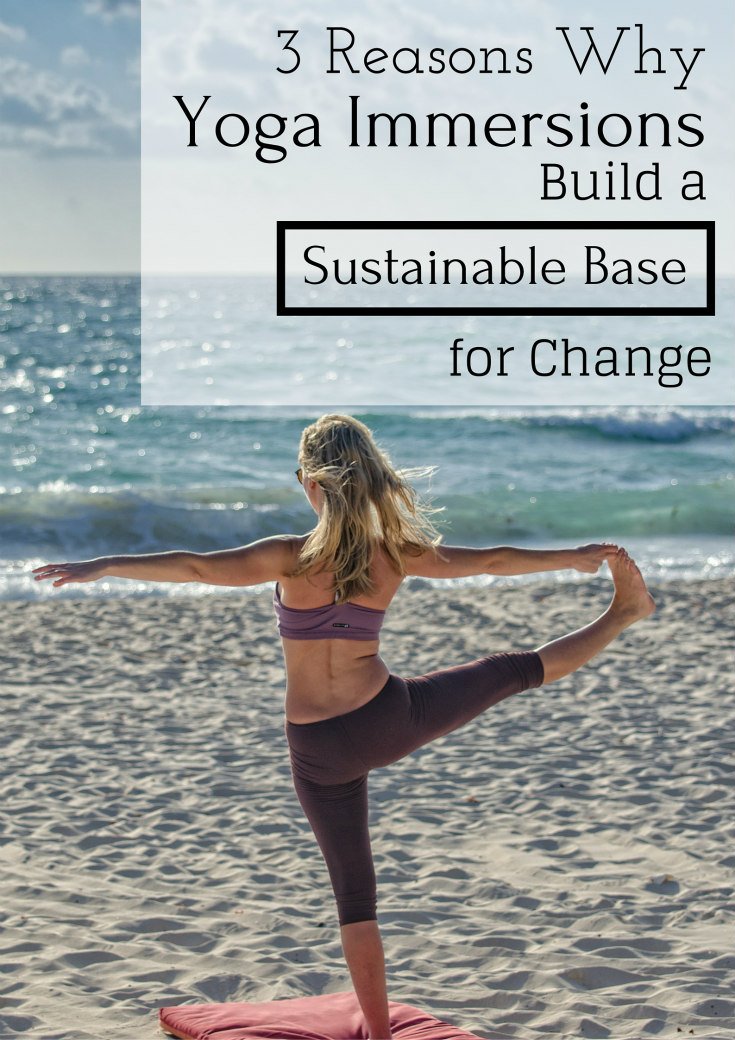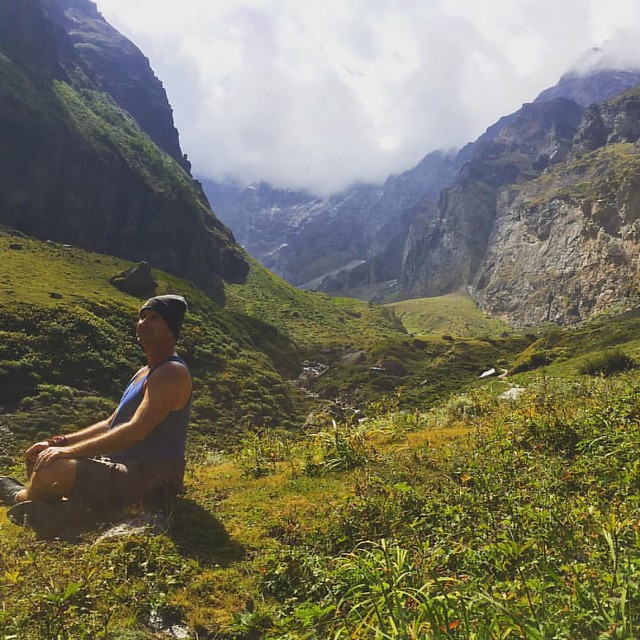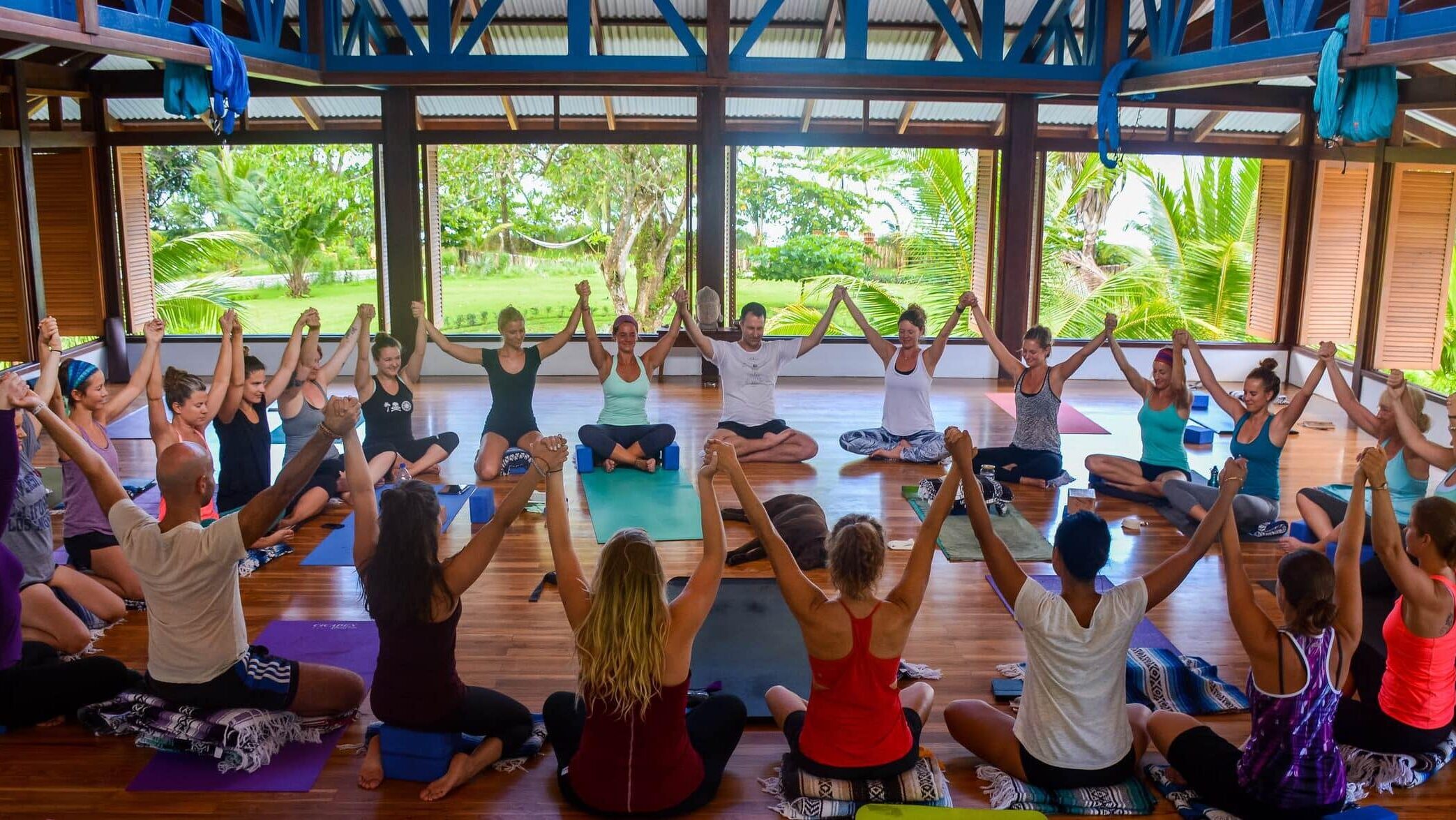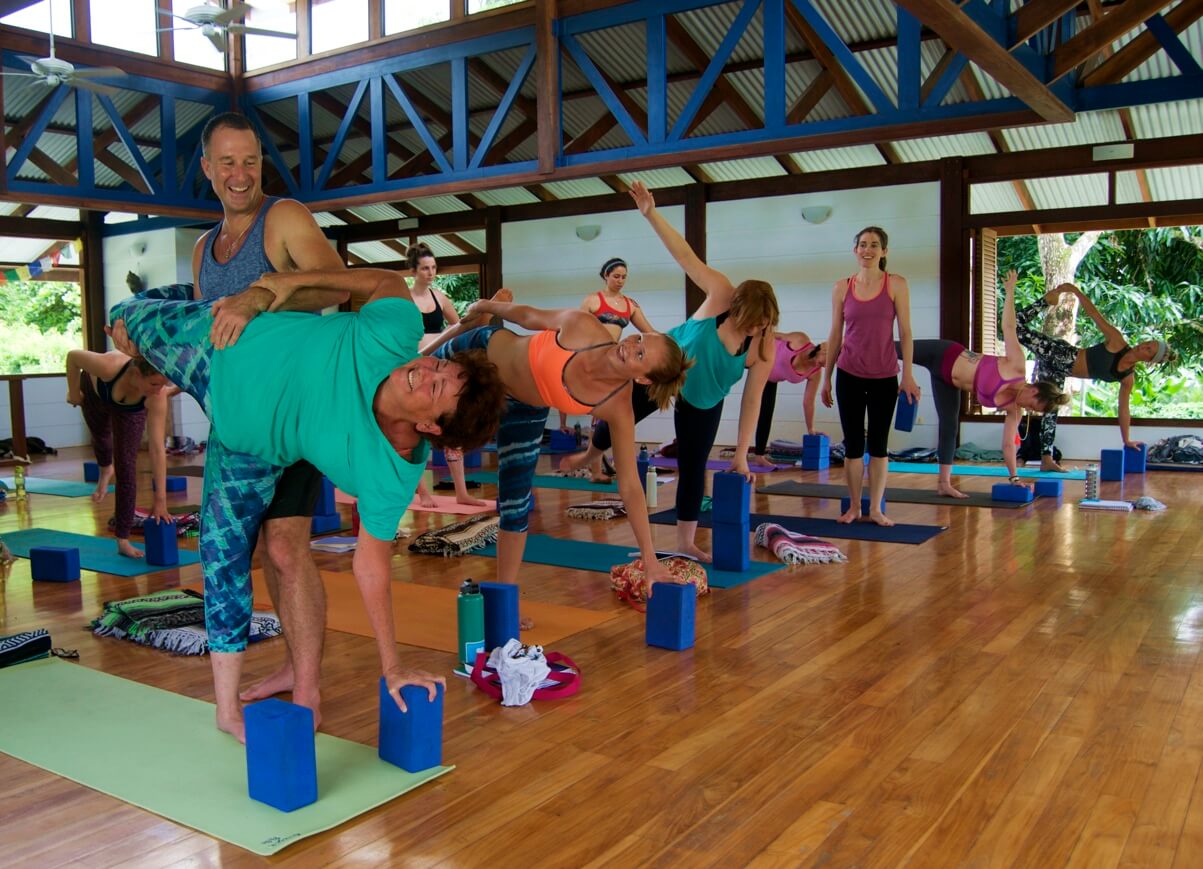Forget the 28 day rule. It never gets easy. Yoga, journaling, meditation, a morning run. It will become part of my habit if I choose to do it. Each day.
That’s what a habit means: constantly choosing to do something until it becomes weird to not do it.
I struggle with the choice each morning. Still. Don’t hit snooze. Stay awake as soon as my eyes open. Morning light glows against my door. I stretch in bed. I roll to a side, take a deep breath and get dressed. It’s 6 am, and I need to start.
Do the thing. Do it the next day. Keep doing it, knowing it will change. I will change. It will grow. I will grow. It will have unexpected breaks and false starts. So will I. Keep going.
Three Reasons Why Yoga Immersions Build a Sustainable Base for Change

To work on a new way of ‘being’ requires effort. And effort is easier when supported by and through community. Like-minded people interested in creating new behaviors, refining intermittent ones and dismantling the unhelpful choices. That’s why I chose to sign up for the Blue Osa yoga immersion.
A yoga immersion was the perfect place to step out of my current process and move into a thorough examination of my life.
We often need a catalyst for change. A moment, decision or event that prompts a re-evaluation of our life.
Am I happy? Am I focused? Am I helpful?
I could wait for the big lessons to come around and test my resolve; that would be my Karmic route of being alive. I could surrender to the greater experience and let life continually offer moments to grow, change and evolve. That’s how life works. But I choose another path, a more decisive one.
Because as yogis we can pursue a conscious path, seeking to understand how all of life exists within the self through an immersion. Through our yoga practice, we can practice all of the great life lessons: joy, patience, sorrow, pain, and the last great practice: dying.
A yoga immersion is a chance to go on a detailed trip through those places with a knowledgeable guide.
Teachers provide students with information, perspective and attention to their process. That’s the value of an immersion: attention. Attention to the process of unfolding, the process of peering inward and noticing what is there.
What can you expect from an immersion?
How do you get the most out of it? Read below for a rundown of what to expect and how to make the most out of it.
Physical
With daily asana practice, surrounded by fellow seekers, you learn the ins and outs of your anatomy.
- How joints work and what movements heal the body
- Effective sequences for your postures, building a complete practice
- Practicing alongside like-minded people
- Learn modifications and how to use props
- Alignment cues to enhance the benefit of each asana
TIP
Buy a separate notebook for class sequencing, relevant anatomy and modifications. This will be your go-to book for logging your classes – carry it to every class you take (private practice or group). You’ll build up a whole set of sequences that you can refer to for your own practice, or to use if you decide to start teaching.
Mental

A yoga immersion will usually include practices to cultivate awareness through meditation.
- Learn to sit with your experience, responding to the situation with a sense of clarity and presence.
- Explore the parts of your being that tug at you – thoughts of insecurity; memories; people you’ve lost
- Learn to bring yourself back to the current moment with mindfulness techniques
- Use asana for various conditions – depression, lethargy, sadness – and see how the physical practice influences the mental practice (and vice-versa!).
TIP:
Journal: buy another notebook just for your thoughts. Write it all down, everything. Get it all out. The physical practice will churn up so many questions. The sitting practice will start to organize and reveal those questions. Make writing down your revelations part of your day.
Spiritual

The purpose of asana is to prepare the body to meditate. Meditation means setting a time to still the mind and sit with your present experience. As you progress, it extends beyond the set time of seated meditation and becomes a way of viewing the world, a state of being, a spiritual path:
- Learn to recognize the synchronistic beauty that connects the world, dissolving the boundary between you and the world
- develop a practice of gratitude and acceptance, viewing each day as a gift to honor and explore
- find the inner teacher, the voice that can guide your decisions
TIP:
– Your spiritual practice is a personal pursuit. Play with different methods of gratitude, reverence and prayer. Try chanting, reciting mantras, volunteering at a homeless shelter, planting a garden. What speaks to the highest in you? That’s your work.
By the end of the immersion you have 28 days under your belt. 28 days of saying yes to your work. 28 days of showing up for your cause. 28 days saying no to the small voices of insecurity and complacency.
The next phase starts on the first morning you aren’t surrounded by peers encouraging you, or a teacher’s expectation holding you accountable.
It starts when the person you are waiting for is you. Who do you want to be? Start working on it.
Click the button below to reserve your spot now.
About the Author
Christopher Grohs, former Blue Osa volunteer, is a licensed massage therapist and yoga teacher, and owns his own practice—vigor + vim—where he integrates movement therapy and soft tissue work to help his clients feel awesome. He graduated from Northeastern University in 2008 with a degree in International Business, Finance and a minor in International Affairs…huh? He loves contact improvisation dance, moving like a cat and spooning his friends.
Book/Inquire Now
Got pain? This will help you!
YOU DESERVE TO LIVE PAIN-FREE...
Receive 7 short, simple, and effective practices to alleviate knee, hip, low back, neck, shoulder pain, and more!
All you need is 5 minutes per lesson and it's FREE!
This revolutionary approach to yoga is new, and no one else is teaching this! Since I created Applied Yoga Anatomy + Muscle Activation™ and started teaching it consistently, I've witnessed students heal long-standing injuries, access yoga postures they never thought possible, and tell me over and over again how their body just feels better.
I hope you'll join me on this journey!
~Yogi Aaron
Is Yoga Teacher Training Right For Me?
We Created This FREE 5 Part Series So You Can Get All The Information To Make The Right Choice.
In this series, you will learn:
-
- Am I a candidate for yoga teacher training??
-
- What will I learn in a YTT?
-
- Do I need to have a perfect downward dog to attend YTT?
14-Day 200-Hour Yoga Teacher Training in Costa Rica
If you are looking for a 14-day 200 hour Yoga Teacher Training Costa Rica Immersion, you have landed in the right place. Join the next one!
300-Hour, 28-Day Yoga Teacher Training
Do You Feel Called To Something Greater?
This 300-Hour Yoga Teacher Training immersion training at Blue Osa will immerse you in yoga for one month.
You will have the specific transformational skills and yogic practices you need in order to connect with your higher purpose.
And more! You will be able to offer these transformative skills to others!




